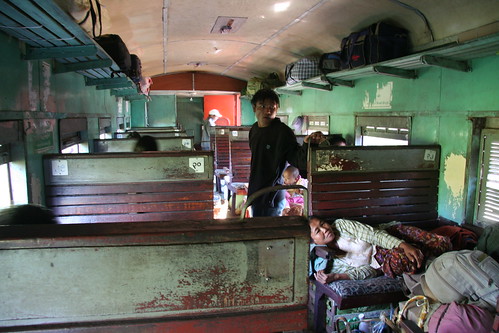Looking back in Burmese history, that part of South-East Asian peninsula has been changing from time to time. It did not exist as a long standing stable nation. Of course, even great Roman empire collapsed when time came. Again British empire had to finish after 2
nd world war. In a movie, I think in
Notting Hill, Britain was described as a small, shy and retiring nation. On the other hand, China has built up its power, reaching enough world's top level, already overtaking British economy in a few years ago, under one party lead without wasting too much time by debating at the parliament. Likewise, a Malay fishing village was transformed into the Republic of Singapore in 1960s and it was successfully upgraded to an affluent country, mainly under the leadership of Lee
Kuan Yew. Now it also serves as second home for many second and third class Burmese people as their government failed to provide an acceptable level of education, living and economic situation while claiming that Burmese economy has been growing strong. A very irregular power supply 6-8 hours a day even in Burma's big city like Yangon clearly contradicts the statement. In fact, Burma was top country in south-east
Asia and
Yangon University established in 1878, was popular in that region until 1962.
Regrettably, these days the university is shut down at irregular intervals by the government for political reason and the courses available are only for limited number of graduates, not for undergraduates.
History of Burma (Source: wiki)
Pyu city-states (c. 100 BC–c. 840 AD)
Mon kingdoms (9
th–11
th, 13
th–16
th, 18
th c.)
Bagan dynasty (849–1287, 1st Empire)
Ava (1364–1555)
Pegu (1287–1539, 1747–1757)
Mrauk U (1434–1784)
Toungoo dynasty (1486–1752, 2
nd Empire)
Konbaung dynasty (1752–1885, 3rd Empire)
Wars with Britain (1824–1826, 1852, 1885)
British
Arakan (1824–1852)
British
Tenasserim (1824–1852)
British
Lower Burma (1852–1886)
British
Upper Burma (1885–1886)
British rule in Burma (1824–1942, 1945–1948)
Nationalist movement in Burma (after 1886)
Ba MawAung SanJapanese occupation of Burma (1942–1945)
Democratic period (1948–1962)
U Nu and
U Thant1st military rule (1962–1989)
Ne Win8888 Uprising (1988)
Aung San Suu Kyi2nd military rule (1989–present)
Saffron Revolution (2007)
Cyclone Nargis (2008)

This is in the carriage for ordinary people in Burma where military government rules

The is today's Burmese way of transportation. Estate cars for both passengers and goods.Locally that kind of car is known as van. (Photo:
naing naing sanay)


No comments:
Post a Comment